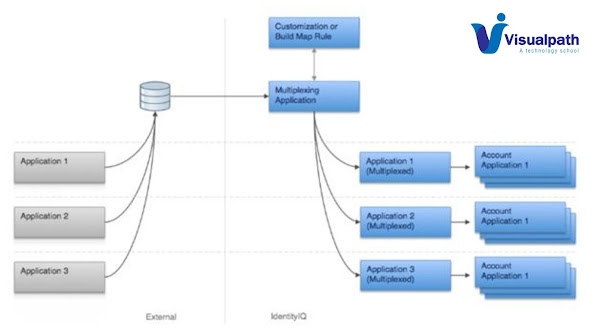- Get link
- X
- Other Apps
- Get link
- X
- Other Apps
SailPoint IdentityIQ (IIQ) is a comprehensive identity governance solution that helps organizations manage user access to applications and data securely. In SailPoint, onboarding applications, correlating identities, and creating identity cubes are essential tasks for establishing a robust identity governance framework.
Here's a general overview of each of these processes:
1. Application
Onboarding:
- Application onboarding involves integrating new applications into the
SailPoint IdentityIQ platform so that they can be managed alongside existing
applications.
- To onboard an application, you typically
need to:
- Define connectors: SailPoint
provides connectors for various applications (e.g., Active Directory, SAP,
Salesforce) that facilitate integration. You may need to configure or customize
these connectors based on the specific requirements of the application.
- Configure application settings: Configure
settings such as authentication methods, provisioning options, attribute
mappings, and entitlements.
- Test connectivity: Ensure that
SailPoint can connect to the application successfully and perform basic
operations like reading user attributes and provisioning accounts. - Sailpoint
Identity IQ Training in Hyderabad
2. Identity
Correlation:
- Identity correlation is the process of linking multiple accounts or
identities belonging to the same individual across different applications or
systems.
- SailPoint uses correlation rules to identify and link related
identities. These rules typically rely on attributes such as username, email
address, employee ID, etc., to establish correlations.
- Correlation rules need to be carefully configured to avoid false
positives or negatives. They should consider factors like data quality,
uniqueness of attributes, and variations in naming conventions.
3. Identity Cubes
Creation:
- Identity Cubes in SailPoint represent a centralized repository of
identity-related data aggregated from connected applications and sources.
- To create Identity Cubes, you typically
follow these steps:
- Define cube schema: Specify the
attributes and data sources you want to include in the Identity Cube.
- Configure aggregation: Configure
rules to aggregate and consolidate identity data from different sources into
the cube. This may involve mapping attributes, defining aggregation logic, and
scheduling data refreshes.
- Test and refine: Validate
that the Identity Cube accurately reflects the identities and attributes from
connected sources. Adjust aggregation rules as needed to improve data accuracy
and completeness.
These processes are critical for
establishing a centralized and consistent view of user identities within an
organization and enabling effective identity governance, access management, and
compliance activities. Organizations often invest significant time and
resources in properly configuring SailPoint IdentityIQ to ensure these
processes are executed accurately and efficiently. - Sailpoint
Identity IQ Online Training
Visualpath is the Leading and Best Institute for learning Sailpoint Identity IQ Online Course. We provide Sailpoint Identity IQ
Online Training, you will get the best course at an affordable cost.
Attend Free Demo Call on -
+91-9989971070.
Visit Our Blog: https://sailpointidentityiqonlinetraining.blogspot.com/
Visit: https://www.visualpath.in/sailpoint-Identity-IQ-online-training.html
SailpointIdentityIQ
SailpointIdentityIQTraining
SailpointOnlineTraining
SailpointTraininginHyderabad
- Get link
- X
- Other Apps

Comments
Post a Comment